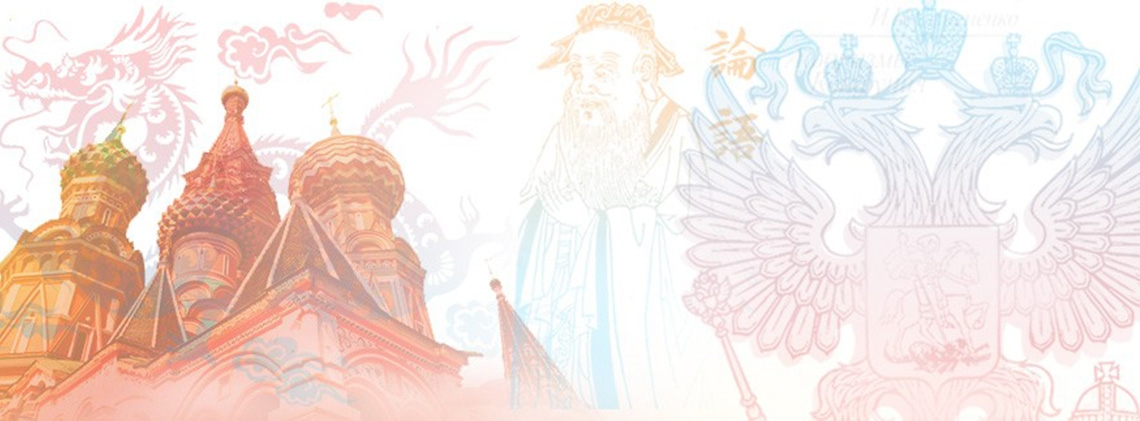
Sino-Russian Cultural Exchange
Splendid
Chi Culture
Topic
Sino-Russian Cultural Exchange
The history of Sino-Russian contacts can be traced back to ancient times. At first it was an indirect exchange, mediated by the neighboring countries through which travelers passed along the Silk Road. It was not until later, especially in the medieval period, that direct contacts between China and Russia were developed. Official contacts for handling external affairs began in the early seventeenth century. At the end of the seventeenth century, after the signing of the Treaty of Nerchinsk (1689), China and Russia began to exchange envoys, sign trade agreements, and develop cultural exchange during the reigns of the Russian emperor Peter the Great (r. 1682–1725) and the Chinese emperor Kangxi (r. 1662–1722) of the Qing dynasty (1644–1911). In the recent past, especially in the eighteenth century, “Chinese fever” began to appear in Russia. In the early twentieth century, a trend of “learning from the Russians” took shape in China.
Chinese travelers had contacts with regimes under Russian jurisdiction while passing through Central Asia. In the early thirteenth century, the Mongols’ westward expedition led to direct contacts between China and Russia. While under Mongol rule (Yuan dynasty, 1271–1368), Russian feudal aristocrats were deeply influenced by Oriental culture; they adopted Oriental customs and costumes. Large quantities of Chinese goods were transported to Russia, and cities along the middle reaches of the Volga River became transit nodes for East-West trade. In the early seventeenth century, during the Wanli reign (1573–1620) of the Ming dynasty (1368–1644), China and Russia began to explore the possibility of establishing ties with each other.
In the early Qing dynasty (mid-seventeenth century), the Russian government sent missions and envoys to Beijing during the reign of the Shunzhi emperor (1644–1661). During the reign of the Kangxi emperor, China and Russia exchanged envoys more frequently. In the fourteenth year of the Kangxi reign (1675), Nikolai Spathari, a.k.a. Nicolae Milescu (1636–1708), led a Russian delegation to China. He was received four times by the Kangxi emperor. This marked a promising inception for cultural exchange between the two nations in the eighteenth century, with both sides expressing willingness to understand and spread awareness of each other’s national conditions. They further exchanged envoys on a regular basis and established a fixed liaison to lay a foundation for long-term exchange. Building on early Sino-Russian contacts and prompted by trends from Western Europe, a “fascination with China” craze was set off in eighteenth-century Russia.
In the nineteenth century, official exchanges between China and Russia became more frequent. Many Chinese diplomats went to Russia: Hong Jun (1839–1996), a renowned scholar and diplomat, served as a special emissary of the Qing dynasty to Russia, Germany, Austria, and the Netherlands; Li Hongzhang (1823–1901), leader of the Westernization Movement, led a delegation to Russia to attend the coronation of Tsar Nicholas II (1868–1918) in 1896. As for the Russian side, organizations that participated in early cultural exchange with China included the Orthodox Church, St. Petersburg Academy (Academia Scientiarum Imperialis Petropolitinae, renamed Russian Academy of Sciences in 1991), Russian Commission of Central Asian and East Asian Studies, and the institutes of Oriental Studies at certain universities. In addition, the exchange of books was an important part of official cultural exchange between these two countries.
During this period, the Russian Missionary Corps gave rise to early Sinological studies in Beijing. Numerous accomplished and talented scholars in Chinese studies emerged—of whom Nikita Yakovlevich Bichurin (1777–1853) was a representative figure. Russian intellectuals, not only Sinologists but also writers, were attracted to China, for example, Alexander Pushkin (1799–1837) and Leo Tolstoy (1828–1910). Chinese literary writings, works by thinkers of the hundred schools, and other ancient works were gradually translated into Russian.
Sino-Russian cultural exchange reached its heyday in the twentieth century. During the first half-century some Chinese scholars were attracted to Russian culture, and they introduced it to China, especially the revolutionary thought of Karl Marx (1818–1883) and Vladimir Lenin (1870–1924). In addition, after the Russian October Revolution, a wave of “Treating Russia as a Teacher” was set in motion. The new socialist culture became a subject matter of exchange between China and Russia: students, journalists, and intellectuals were sent to Moscow to do investigative research. Since the middle of the twentieth century, China and Russia have interacted actively. In the 1950s, a torrent of two-way communication was set in motion. However, such two-way learning activities were weakened for twenty years due to the severance of Sino-Soviet relations. In 1980s, exchange activities once again became vigorous.



